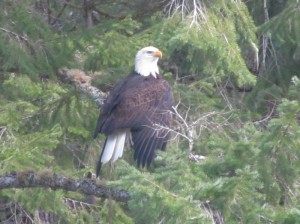 In the supermarket, I am barely paying attention to the woman passing my purchases under the scanner. As she recites her formula, “Did you find everything you want?” it is clear she is barely paying attention to me. Our minds are occupied, but not with each other or with the here and now. We are both somewhere else.
In the supermarket, I am barely paying attention to the woman passing my purchases under the scanner. As she recites her formula, “Did you find everything you want?” it is clear she is barely paying attention to me. Our minds are occupied, but not with each other or with the here and now. We are both somewhere else.
It doesn’t need to be this way. I can give her my full attention, noticing her appearance, facial expressions, movements. I can remember that she has a family, friends, history, personality, needs, desires, cares, worries, and hopes. I can, to some extent, experience her as a complete human being. I can glance at her name tag and address her by name. If I can engage her in conversation and get her to make eye contact, perhaps she will begin to experience me as well. With repeated conversations, I can come to know her in more depth, learn her connections in the community, perhaps even begin to be friends. And she may begin to know me.
In some sense, when she was just an instrument of my shopping by ringing up my purchases, I was not experiencing her. As I begin to connect with her as a unique human being, to be mindful of her, to interact with her, she begins to gain depth and meaning.

I am a birder. Whenever I see an unfamiliar bird, I pay close attention. Where is it, what is it doing, how is it doing it? What shape is it’s body, beak, tail, head? What are its colours? What markings does it have? For some years, though, this intense experience of the bird came to an end when I found the correct name in the field guide. In contrast to the intensity of identification, when I saw a familiar bird, it became “just a junco” or “another crow”. Even charismatic birds like bald eagles or pileated woodpeckers only received a glance for recognition.
I have eventually come to realize how mistaken was this approach; how I did not really know these birds at all. Birds continue to be fascinating even after they have been identified. There is much, much more to birds than their names. What is it doing? Why is it doing it? What will it do next? Where did it come from? Where is it going? What are its life ways? There is much to know about the natural history and ecology of each unique individual bird, and some of this can only be learned through direct, mindful experience.
An important goal of my ecopsychology is just this, to become more mindful of one’s own ecology and the beings who share it. To try, at least some of the time, to be more fully aware of others and somewhat less aware of my own thoughts when they are disconnected from my immediate experiences. Can we identify practices that enable us, on some occasions, to allow our senses to have more influence on our thoughts, feelings, and actions? Can ecopsychology include practices that enable us to truly experience each unique being, whether a cashier or a bird?
